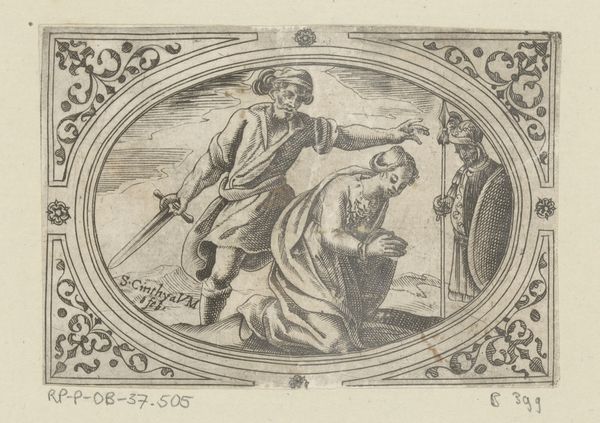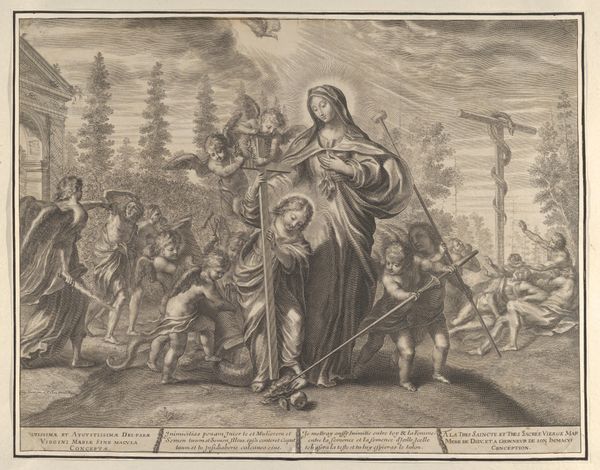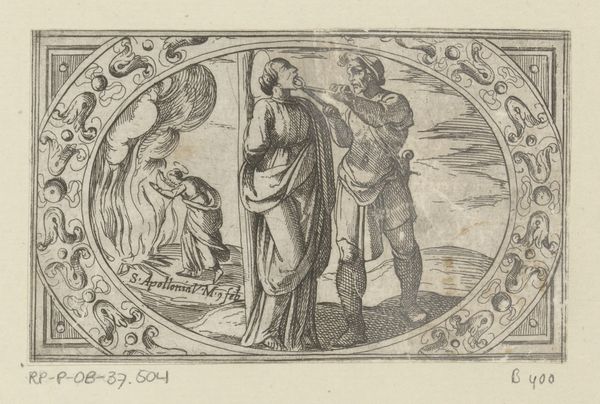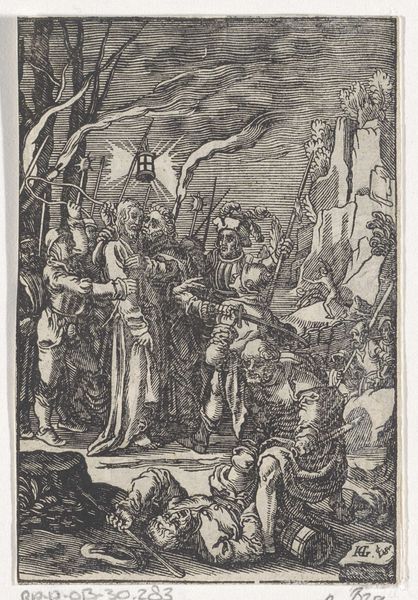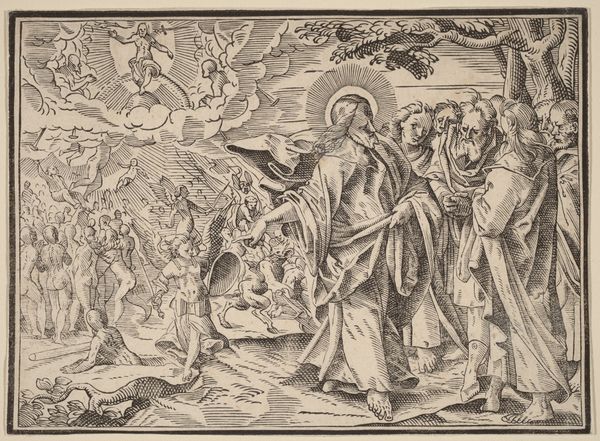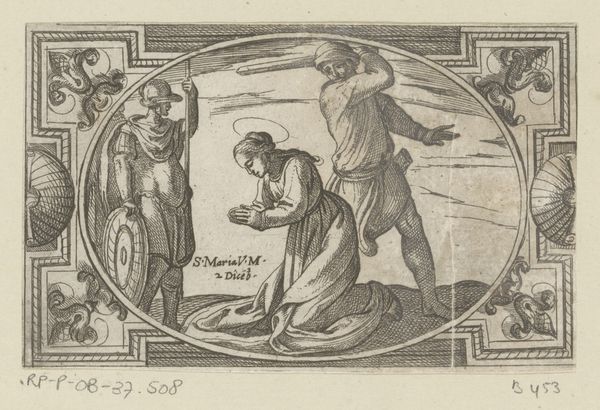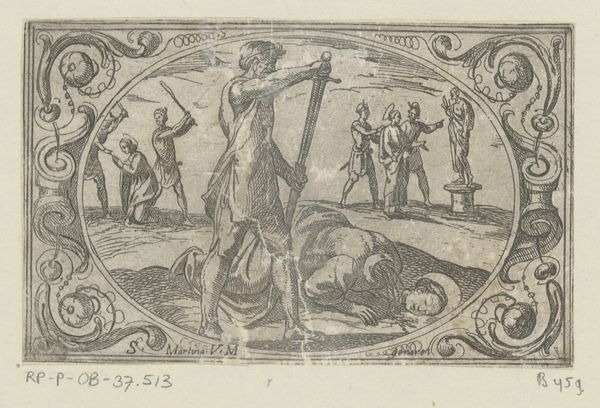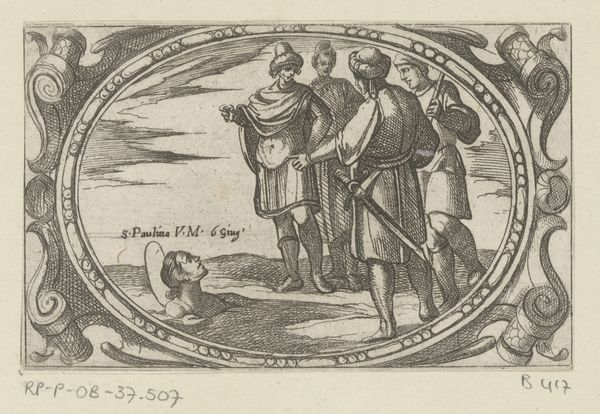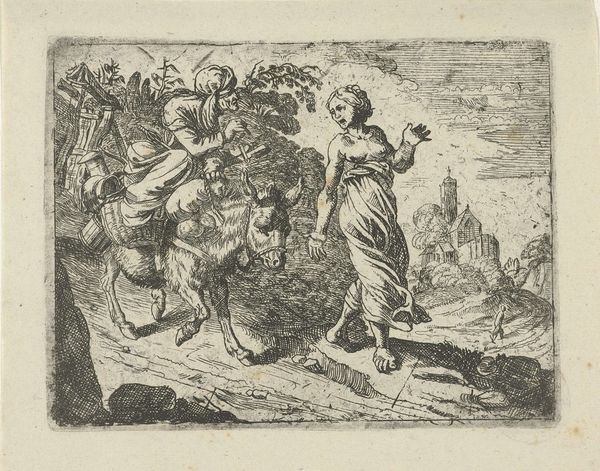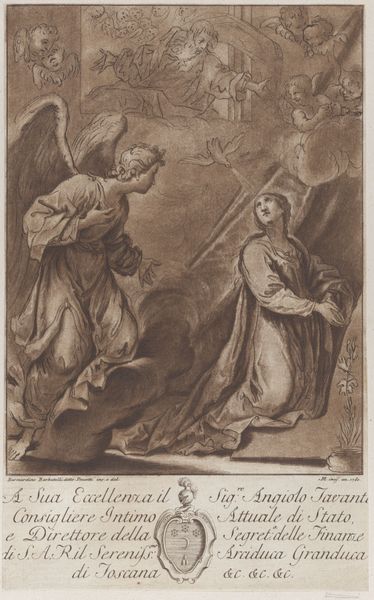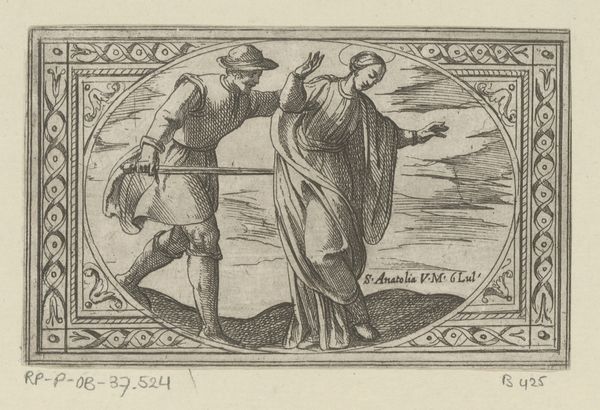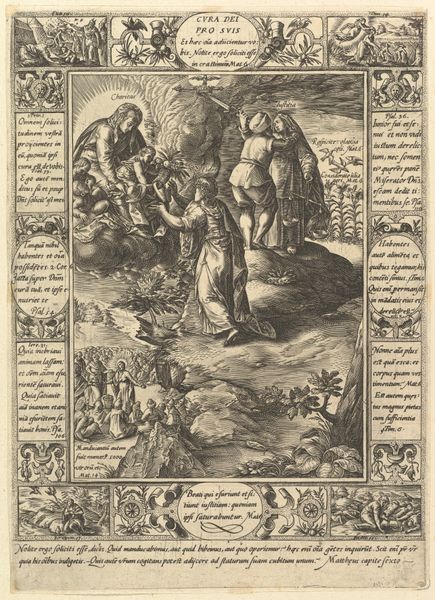
drawing, print, ink, engraving
#
drawing
#
narrative-art
#
baroque
#
pen drawing
# print
#
pen illustration
#
pen sketch
#
figuration
#
ink
#
history-painting
#
engraving
Dimensions: height 73 mm, width 114 mm
Copyright: Rijks Museum: Open Domain
Editor: So, this engraving, "H. Agnes en H. Emerentiana," dating roughly from 1565 to 1630, and residing at the Rijksmuseum, is attributed to Antonio Tempesta. Looking at this print, the detail is striking, and the contrast between the dark lines and the light paper gives it real power, especially considering the scene depicts martyrdom. How do you approach a piece like this from a materialist perspective? Curator: Well, I find it fascinating to consider the labor involved in creating this image. The fine lines, etched meticulously into a metal plate, speak of highly skilled craftsmanship. We should consider the engraver less as an individual genius and more as a worker operating within a specific economic and social system. Editor: A worker? What does that even mean here? Curator: Think about the production of prints at this time. It was a commercial enterprise, a means of disseminating information and imagery widely. This image wasn't created in a vacuum, but to fulfill a demand. It’s reproductive! A means to proliferate imagery across regions and classes. Look at the quality of the line: this wasn't made for the ages; it was to be spent like money, degraded in the printing and distribution. We see the evidence of this life now. How does understanding it as a repeatable medium influence your perspective on it? Editor: I suppose I hadn't really considered it in terms of "production" before, more in terms of individual artistic expression... like, how Tempesta wanted to show religious suffering. It makes it seem more functional, but perhaps that's the point. Curator: Exactly. The print's function determined the selection of materials, its scale, and its aesthetic. The choice of engraving – a relatively inexpensive and easily reproducible technique – enabled it to reach a broader audience. It reframes our understanding. It is now less a unique, priceless image but an instrument of dissemination. Editor: I never thought about art being disseminated like that. Seeing it that way brings up questions about audience and impact, beyond just the artistry itself. Thanks for changing my view. Curator: Absolutely! It's all about questioning the traditional boundaries and focusing on the social life of objects and those involved in the artwork's manufacture and afterlife.
Comments
No comments
Be the first to comment and join the conversation on the ultimate creative platform.
